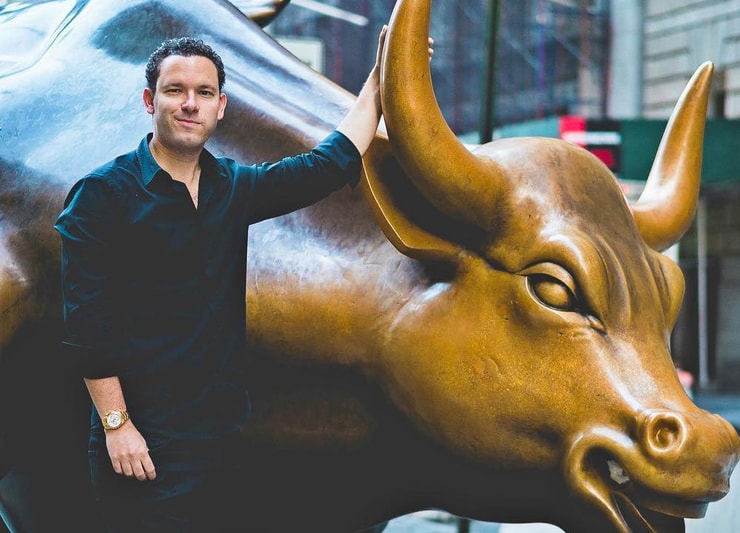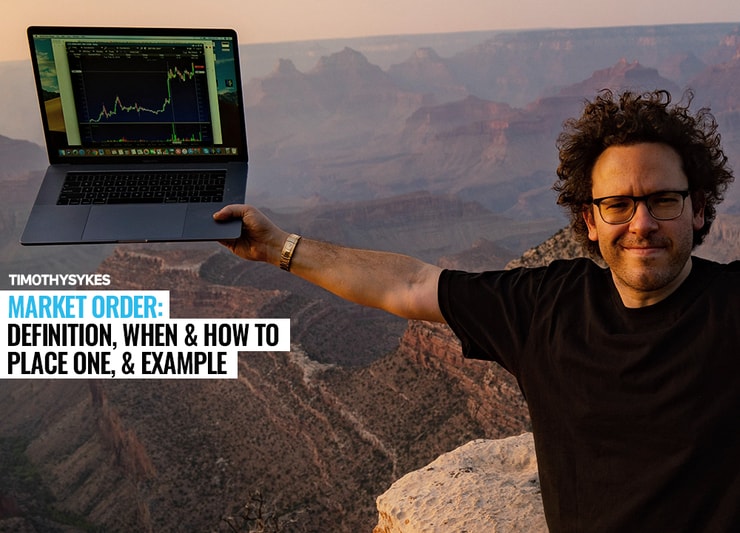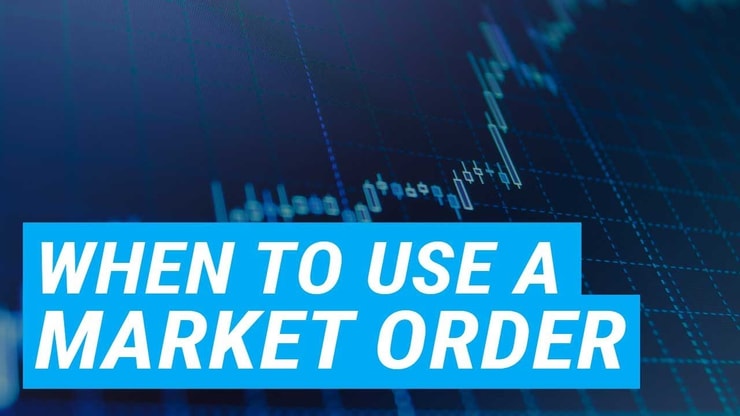What’s a market order? Is it something I can use? I get asked this all the time.
It’s not about if you can use one, but if you should. Whenever you make a trade, you have to place an order. But a market order isn’t always the best option.
I don’t like market orders. They’re generally not great for your risk/reward. You should take the time to learn about all the different order types.
I’ve been telling my students for years to avoid market orders. But I still get questions about them. So here I’ll tell you about market orders and then show you smarter ways to trade.
Let’s get into it.
Table of Contents
- 1 What Is a Market Order?
- 2 How Do Market Orders Work?
- 3 Are Market Orders Dangerous?
- 4 What Are the Types of Orders?
- 5 Should I Use Market or Limit Orders?
- 6 How Long Does a Market Order Take?
- 7 Market Order Example
- 8 When to Place a Market Order: Understanding the Strategy Behind It
- 9 Apply to the Trading Challenge
- 10 The Bottom Line
What Is a Market Order?
Traders use market orders when they want to buy or sell right now. It’s a simple type of order, but there’s no defined price.
When you place a trade, you select an option for order type before you submit the order. Most brokers include market orders as one of the options.
Market orders are like the fast-food of order types … easy, but low quality. It’s not something you want to use a lot.
How Do Market Orders Work?
A market order is filled at the current market price.
A market sell order will usually get filled at or around the current bid price. A market buy order will usually get filled around the current ask. But getting filled close to the current price is never guaranteed.
If you’re gonna use one, you should expect to pay the highest price on the current bids, and the lowest sell on the ask.
Market orders can be tempting. They can seem like an easy way to deal with a trade.
But with penny stocks, the price can change fast. The price you see when you click the button is subject to change. This is especially true for stocks with high volume.
New to penny stocks? Get my FREE online guide and start learning today.
Are Market Orders Dangerous?

I think they can be very dangerous!
Let’s say a stock jumps from $1 to $3. You think it might have more room to run, so you look to buy around $3.10.
If the stock is super volatile, a market order could get filled 50 cents, or even $1, higher than your target price.
With 1,000 shares, that’s an extra $500 to $1,000 you paid just to enter the stock. I don’t care what stock it is … that’s never worth it!
Market orders can be a terrible way to trade. You might get lucky once or twice, especially in a hot market. But at some point, you’ll probably get screwed.
What Are the Types of Orders?

Market Order
This order type is used to fill an order quickly. When you place a trade, use the market order option in the ‘order types’ box.
A market order will fill you at the current market price. If you’re buying a stock, it’ll fill you at the current ask price. If you’re selling, it’ll be the current bid price.
Market orders can be tricky. With volatile stocks, the price can change quickly. You might be OK with buying the current price, but that doesn’t mean your order will fill there.
I recommend traders — especially beginners — avoid this order type.
Limit Order
A limit order is available with most brokers. It’s used to buy and sell, adding a few restrictions to a market order. Limit orders can help with securing specific prices, potentially giving you better risk/reward.
A limit order will only be executed if the stock reaches your limit price or lower. With selling, it’s the limit price or higher.
If you see an entry spot on a hot play, you can set a limit order to only execute if it reaches that point. If the stock never hits your limit price, the order won’t go through.
Sometimes, a limit order won’t fill every single share. Learn to accept this! The shares you did fill are following a plan.
If you throw your process out the window to chase a stock or save on commissions, you can’t protect your downside. You’re completely vulnerable to price action.
That’s why I recommend limit orders for all day traders.
Want to know more? You can start building a solid trading foundation with my 30-Day Bootcamp. For less than $100, you can make a smart investment in your trading education. Get in my 30-Day Bootcamp today!
More Breaking News
- Is FormFactor Poised for a Rally After Its Semicon Innovation Spotlight?
- Will Coinbase’s Partnership Skyrocket Their Future or Hit the Brakes?
- Bitfarms Faces Challenges: Is It a Setback or an Opportunity?
Stop Order
A stop order will sell a stock when it reaches a specified price. This is called the stop price. Once the price is hit, the order is automatically executed as a market order.
Some day traders use stop orders when they don’t have time to watch a chart. You can set the order and walk away. If it hits your price, you don’t have to be there to sell.
Getting filled at one price is never guaranteed. In terms of selling, some shares may get filled below your stop. This is referred to as slippage.
Learn more about slippage in this video:
Buy Stop Order
A buy stop order is very similar to a stop order. But instead of using it to cut a loss, you use it to buy a stock. But you can’t just set this type and walk away.
If your buy stop order gets executed, remember to set a sell stop order at your risk level. If you fill shares and walk away, the play could fail and you might get screwed.
Be responsible when you use this type of order.
Should I Use Market or Limit Orders?

I can’t stress this enough … limit orders are WAY better than market orders. Why? Because limit orders follow a plan.
A good setup usually has a small entry window — getting filled close to it is key. If you get a bad market order, you could get filled much higher than your target price. This can ruin the entire trade and affect your trading mindset.
You have to maintain a proper risk/reward while day trading. Limit orders are a great option. Even if you don’t fill every single share, you’ll be in better shape than if you chased the stock. You can protect your downside when you use a limit order!
Are you ready to navigate a volatile market? Start prepping with my no-cost “Volatility Survival Guide.”
How Long Does a Market Order Take?
Market orders usually fill instantly, but that doesn’t mean it’s best to use one.
Stick with limit orders as much as you can.
Market Order Example

Even though I’m not a fan, a market order can be good when used in a specific way. Let’s discuss it, but keep in mind that this is completely hypothetical.
Focus on big percent gainers. Let’s say you missed your limit order, and now the FOMO is setting in. You’re desperate … So you decide to use a market order.
Only do it if the current price isn’t too much higher than your limit. Also, make sure the stock has the potential to run more. A market order should be a last resort. Only use it on an A+ setup.
When to Place a Market Order: Understanding the Strategy Behind It

When you look at the Level 2 quotes, you want to see buyers stacked on several price levels below your entry. This is known as bid support. If you market sell when there’s strong support, you’re less likely to take slippage.
When a stock makes a big move, it typically draws in volume or liquidity. A market order should only be used on highly liquid stocks. The stock should be doing way more volume than previous days. If there’s a lot of relative buying, it can cause the price to rise.
You also want to make sure the ask is liquid. That might be confusing, but hear me out. Let’s say you put in a market order when the ask is $1. Make sure the next order isn’t way higher, like $1.30.
If that happens when you buy 1,000 shares, you could instantly put $300 at risk. You aren’t guaranteed to fill at the current price of $1. This kind of thing can catch newbie traders off guard.
Illiquid stocks are the worst for market orders … The spread between the bid and ask can get very wide. I recommend avoiding this order type in general.
Apply to the Trading Challenge

If you want to learn to navigate the markets on your own, apply for my Trading Challenge. I designed it so that I could be a mentor. The Challenge is for traders who are dedicated to learning self-sufficiency in the markets. I only want to teach the hardest working students.
If you’re just looking for hot picks, there’s plenty of ‘gurus’ out there for that. I want to teach traders how to think for themselves in any kind of market.
If you’re accepted into the Challenge, you’ll have access to a ton of content — video lessons, webinars, and more. You can also use our chat room every day, where students and mentors talk all things trading. I share all of my trades on Profit.ly because I think transparency reigns in this notoriously sketchy industry.
I’ve been trading and teaching for many years now. Several of my students have gone on to make big profits.* When you join the Challenge, you get to be a part of an incredible community that can help you through the struggle — as long as you’re willing to work for it.
In 2020, I hit $6 million in trading profits.* I’ve made a lot of mistakes along the way. I want to help you avoid the same mistakes by being a transparent trader in an industry full of fakes.
Apply today and start your journey!
(*These results are not typical. Individual results will vary. Most traders lose money. My top students and I have the benefit of many years of hard work and dedication. Trading is inherently risky. Always do your due diligence and never risk more than you can afford to lose.)
The Bottom Line

I stand by my opinion … For the most part, market orders are a bad idea. There’s a lot of risk for inexperienced traders.
Stick with limit orders. Focus on getting filled at an ideal price for your plan. Your trading plan is more important than chasing a stock at crazy prices. If you stay disciplined, you’ll benefit in the long run.
It all comes down to education. Once you know how risky market orders can be, you’ll get why I say to avoid them.
Keep market orders out of your plan. Stay strict with your process and keep grinding.
Want to see what I’m watching this week? Sign up for my NO-COST watchlist here!
What do you think about market orders? Let me know in the comments!







Leave a reply